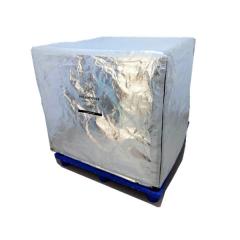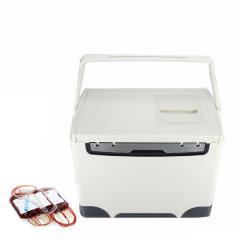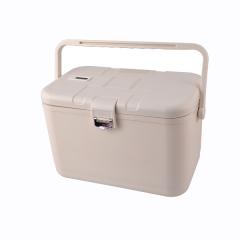Cold chain logistics involve the transportation and storage of perishable goods requiring specific temperature control, such as fresh food(retail industry), pharmaceuticals, and chemicals. As demand for fresh products and temperature-sensitive medications rises, cold chain logistics become essential to ensure the quality, safety, and longevity of these goods.
Current Trends in Cold Chain Usage
Digitalization and automation are revolutionizing the cold chain sector. More companies are adopting advanced technologies to enhance temperature monitoring, operational efficiency, and sustainability. Solutions like IoT sensors, blockchain for traceability, and electric vehicles are gaining traction in this field.
The Necessity of Proposing Cold Chain Supply Chain Solutions
With the exponential growth in demand for perishable products, ensuring an efficient and safe supply chain is crucial. Continuous improvement in cold chain infrastructure, technology, and processes is necessary to reduce losses, improve efficiency, and ensure regulatory compliance, particularly in sectors like food and healthcare.
Objective Challenges in Cold Chain Logistics
- Lagging Technological Levels: Many cold storage facilities are outdated, with low automation and imprecise temperature control, leading to product losses. For example, older facilities may struggle to adjust temperatures in real-time.
- Low Warehouse Efficiency: Traditional manual operations are slow and hinder real-time inventory monitoring, resulting in high storage costs and low stock turnover. Some cold chain warehouses still rely on manual record-keeping, which increases errors.
- Aging Facilities and Equipment: Worn-out facilities and poor maintenance increase safety risks and reduce refrigeration efficiency, harming long-term sustainability.
- Low Cold Chain Digitalization: A lack of unified information management platforms limits visibility and traceability, affecting overall logistics efficiency.
Operational Difficulties in Cold Chain Logistics
The most difficult thing to control in cold chain logistics is the temperature control throughout the transport.
The main difficulties factors are:
01-Uneven refrigeration in cold chain compartments
There are reasons for uneven cooling in cold chain compartments:
a. Reason for car type.
The carriages are divided into two types of boxes, upper and lower air outlet, and it is necessary to consider whether the cold air is circulated in the box, and only the circulation can be fully cooled.
b. Reasons for cargo stacking.
Goods are always stacked in the compartment, which can result in the centre of the goods being inadequately cooled.
Improvement measures: Pallets are inserted at intervals to allow for gaps; use of multi-hollow pallets promotes the contact area between the cold air and the goods and the circulation of the cold air.
02-Cabin insulation is easily compromised
The thickness, material and sealing of the carriages will affect the insulation effect of the carriages, thus affecting the temperature control of cold chain logistics.
03-Difficulty in achieving temperature monitoring and selecting appropriate control equipment
In cold chain logistics, the accuracy and stability of temperature monitoring and control equipment also play a key role in temperature control. How to ensure that the equipment works properly and monitor and adjust the temperature in a timely manner is a challenge for cold chain logistics.
04-Personnel and operational factors
Temperature control in cold chain logistics is easily affected by the skills and quality of operators. Correct operation of refrigeration equipment, rational planning of cargo stacking and timely temperature adjustment are the keys to ensure temperature control in cold chain logistics. Therefore, the operation of cold chain logistics is very difficult if it completely relies on pure manual labour
05-Environmental and climatic factors
Climatic conditions can have a significant impact on temperature control in cold chain logistics. For example, extreme weather may cause refrigeration equipment to malfunction or affect temperature stabilisation of goods during transport.
06-Supply Chain Collaboration
Cold chain logistics involves several links, such as procurement, warehousing, transport and distribution. How to achieve temperature control and collaborative management in each link to ensure the temperature stability of the whole supply chain is the challenge of cold chain logistics.
To sum up, the most difficult thing to control in cold chain logistics is the temperature control of the whole transport process, which involves various factors such as cabin refrigeration, heat preservation effect, equipment, personnel and environment. In order to solve this problem, cold chain logistics enterprises need to continuously improve the technical level, perfect the management system and optimise the operation mode, so as to ensure the temperature stability in the process of cold chain logistics.

 português
português  English
English français
français русский
русский italiano
italiano español
español العربية
العربية 日本語
日本語 한국의
한국의 magyar
magyar










